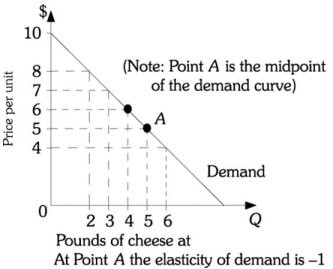Other things equal, if wage rates increase by 20 percent, the greatest decline in employment will occur when labor costs are a:
A. large proportion of total costs and product demand is elastic.
B. small proportion of total costs and product demand is elastic.
C. large proportion of total costs and product demand is inelastic.
D. small proportion of total costs and product demand is inelastic.
Answer: A
You might also like to view...
A firm produces 1000 units per week. It hires 10 full-time workers (40 hours/week each) at an hourly wage of $20 . Raw materials costs $5 per unit. Rent for the factory is $1,500 per week. What are the overall costs for the week?
a. total variable cost is $5,000 . total fixed cost is $1,500; total cost is $6,500 b. total variable cost is $13,000 . total fixed cost is $9,500; total cost is $22,500 c. total variable cost is $13,000 . total fixed cost is $1,500; total cost is $14,500 d. total variable cost is $5,000 . total fixed cost is $9,500; total cost is $14,500
You have a price-weighted index made up of two stocks, A and B) The price of A equals $30 and the price of B equals $70. What is the current value of this index? Also, what will be the percentage change in the index resulting from a 10 % increase only in the price of A? A 10% increase only in the price of B?
What will be an ideal response?
Refer to the information provided in Figure 13.2 below to answer the question(s) that follow.  Figure 13.2 Refer to Figure 13.2. This firm's marginal revenue will be negative at
Figure 13.2 Refer to Figure 13.2. This firm's marginal revenue will be negative at
A. prices between $4 and $8. B. prices above $5. C. prices below $5. D. all prices.
The average variable cost of producing 250 sundaes is $5. At this level of output, average variable cost is minimized. Which of the following statements is true?
A. Average fixed cost is minimized at an output less than 250 sundaes. B. Total cost of producing 250 sundaes is $1,250. C. Average total cost is minimized at an output greater than 250 sundaes. D. Marginal cost of the 251st sundae is $1,250.